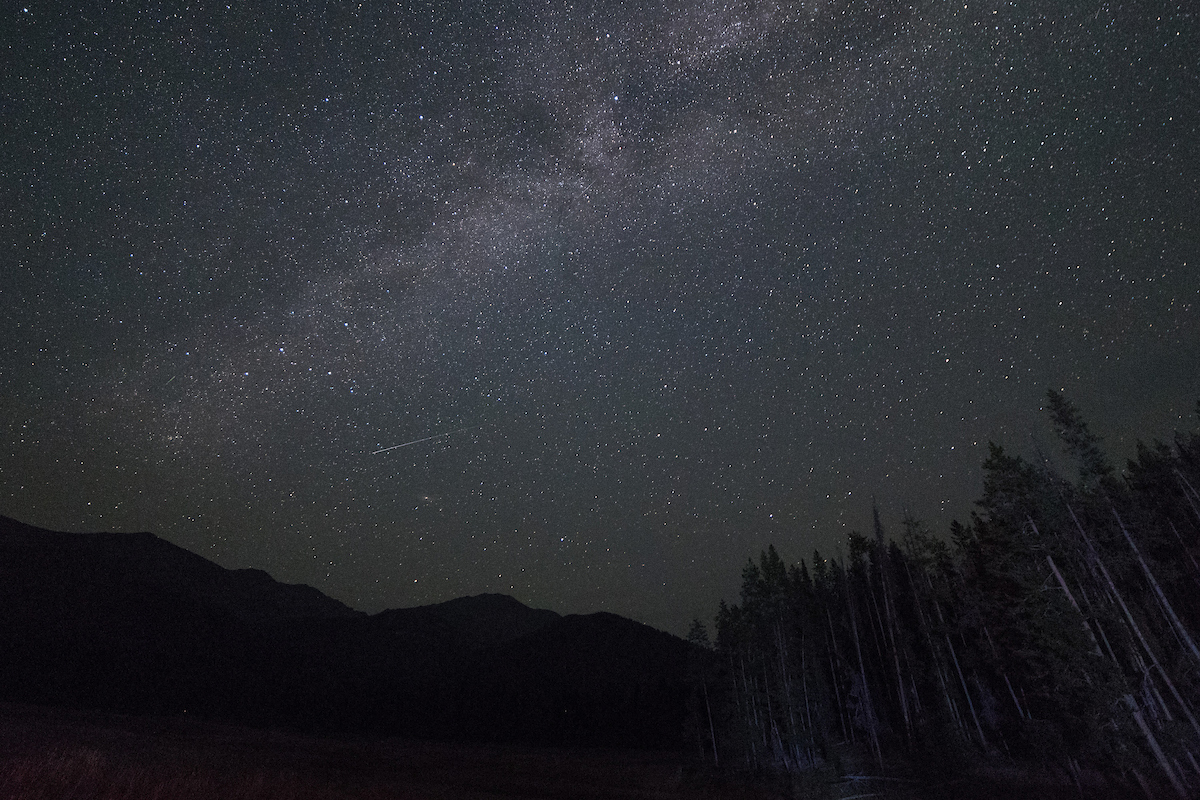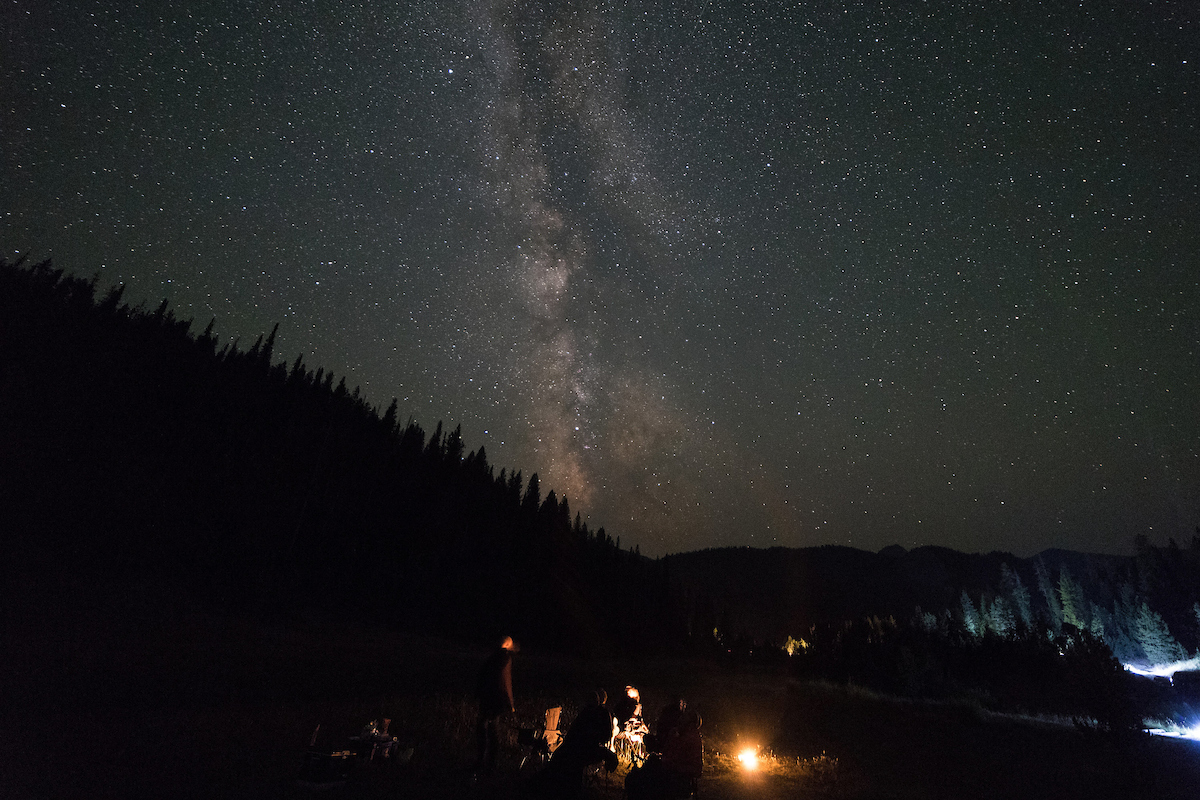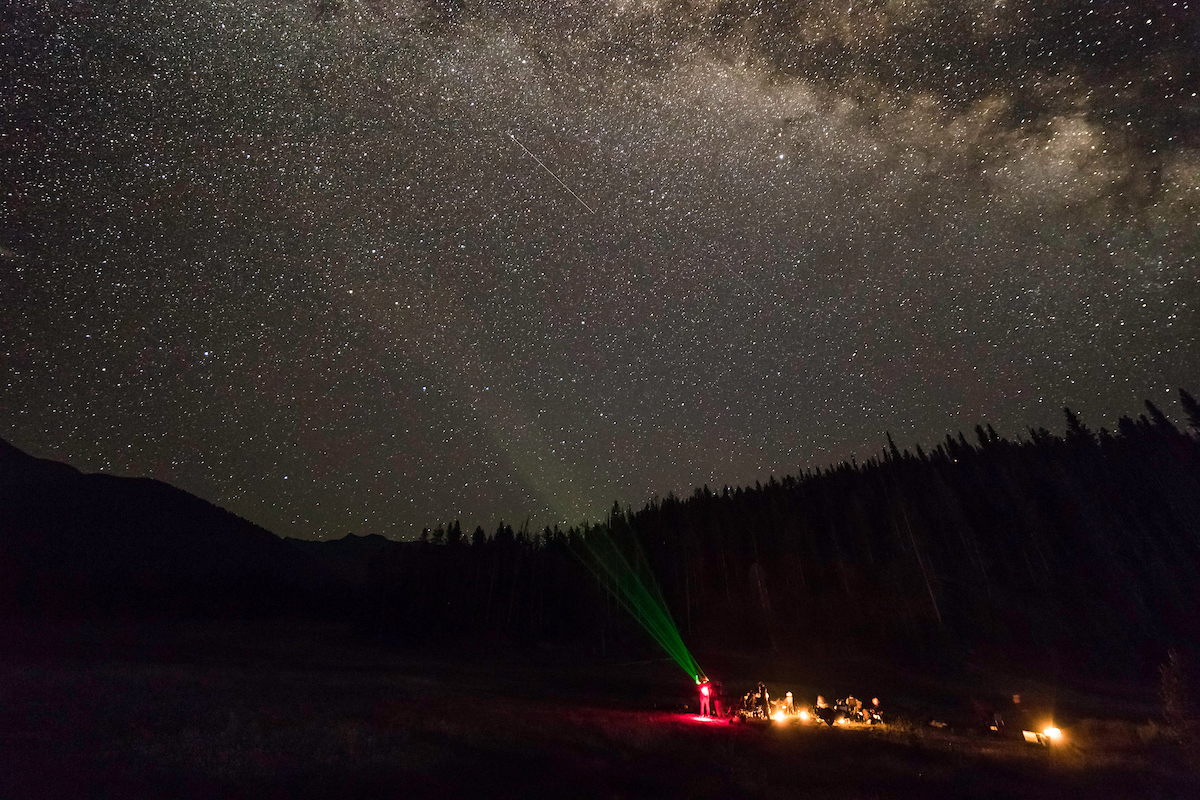We Watched the Perseid Meteor Shower from the 1st Dark Sky Reserve in the US

The Perseid meteor shower dazzles skywatchers every year around mid-August as the Earth passes through the debris left by Comet Swift-Tuttle. This year, I traveled to the recently accredited Central Idaho Dark Sky Reserve to watch the event in some of the country's darkest skies.
I departed from New York City and its stormy skies early Saturday morning. Cloud coverage throughout the weekend made skywatching difficult for those in the tristate area.
I was concerned we might not fare much better in Idaho, though. Smoke from the massive fire complexes on the West Coast had covered Salt Lake City by the time I arrived there for my connecting flight to Boise, Idaho. Seen from the air, southern Idaho's flat topography combined with the haze from the fires to give the impression we were flying over a model train set. All sense of scale disappeared. Fortunately, the haze dissipated enough before Saturday night, making for some incredible views. [The Dazzling Perseid Meteor Shower of 2018 in Photos]
Getting to the reserve
The Central Idaho Dark Sky Reserve encompasses much of the Sawtooth National Recreation Area, as well as several towns just to the south of Sawtooth. I stayed in one of these, Ketchum, a ski town in this southern area located roughly 153 miles (246 kilometers) from Boise.
My visit was hosted and arranged by Chevrolet as part of an unpaid media preview highlighting the Chevrolet Bolt EV all-electric vehicle and the 2018 Perseid meteor shower. The Chevy team provided a Bolt EV for my 2-and-a-half-hour drive from Boise to showcase the vehicle's 238-mile (383 km) range.
Saturday night
I arrived at our viewing spot in the Sawtooth National Forest at around 10 p.m. Mountain Time. I met the rest of the group members, who had arrived earlier and were already talking with Steve Botti, the mayor of Stanley, Idaho, about the dark sky reserve. With a population of 69, Stanley sits smack in the middle of the reserve.
The Milky Way glowed brightly in the clear sky, quite visible despite the headlights and headlamps of the people joining me. Scientists now estimate that nearly 80 percent of people in the U.S. can no longer see the Milky Way, Botti said. "Some of them [have] never seen the Milky Way. They've just read about it in books," he added. "Well, there it is in all its glory."
Get the Space.com Newsletter
Breaking space news, the latest updates on rocket launches, skywatching events and more!
In a rare quadruple showing, Venus, Mars, Jupiter and Saturn all came out that night to join the usual collection of celestial objects — well, more than the usual collection for most of us. A whole host of glimmering lights filled the sky amid the familiar stars visible to city folks — such as Sirius in the Little Dipper and Rigel, which forms the right leg of Orion. I watched these lights wheel across the heavens over the course of several hours as I trained my eyes to the east, toward a patch of sky near the constellation Perseus. [The North Star: A Moving Target]

During the Perseid shower, this constellation appears in the same location in the sky as Swift-Tuttle's debris trail. As a result, the Perseid meteors appear to radiate away from the constellation, although they may show up far from it in the sky. I was treated that night to a view of several shooting stars, but I looked forward to seeing even more later; the shower would peak the following night.
The temperature had dropped to the low 40s Fahrenheit (4 to 7 degrees Celsius) by time we left. It was much chillier than in Ketchum, which was just 24 miles (39 km) down the road. The 1,400-foot (4,000 meters) increase in altitude likely contributed to the temperature change. The car's heated seats provided a welcome reprieve for this underdressed journalist.
Sunday hike
It was already light by the time I dragged myself out of bed at 7:30 the following morning for a stroll. I had hoped to spot some wildlife in the predawn landscape, but my previous 19-hour day got the best of me, and I only had time for a quick stroll.
After breakfast and a jaunt about town, I took a Bolt EV past our skywatching stakeout to a trailhead in the Boulder Mountains. The trail led me along the mountainside through a forest of lodgepole pine and Douglas fir to a small alpine lake. Red yarrow and blue lupines bloomed from the scree along the trail. There were times when all I could hear was my own breath and the buzzing of grasshoppers along the trail.
Coming back from the lake, I met a couple who had come to Stanley specifically for the Perseids as well. Originally from Arlington, Virginia, the two had relocated to Colorado and were attracted by the Central Idaho Dark Sky Reserve's accreditation last December by the International Dark-Sky Association. They had previously watched the event from Great Basin National Park, Nevada, which the same association had certified as an international dark sky park in 2016. That night would be the peak of the shower, they told me.
Sunday night spectacle
I arrived at our skywatching site prepared with a heavy jacket and boots on Sunday night. The new moon of the previous night had provided excellent dark-sky conditions to view the meteor shower. This night, the wafer-thin crescent set just after sunset, promising another ideal night of stargazing. [Earth's Moon Phases, Monthly Lunar Cycles (Infographic)]
Amateur astronomer and dark-sky advocate Stephen Pauley joined us with his wife, Marilyn, at the skywatching site. A retired ear, nose and throat surgeon from Southern California, Pauley studied celestial navigation in order to sail to Hawaii with his family in 1979, using just a sextant and a clear sky for directions.

In the early 1980s, Pauley and his wife built a home in the town of Elkhorn, near Ketchum. But with each passing year, he saw fewer stars in the sky. In the 1990s, Pauley began advocating for ordinances to reduce light pollution, ultimately spearheading the movement that resulted in the dark sky reserve.
As I lay on the ground watching for shooting stars, Pauley recounted his three decades of work with city, county and federal agencies. He also explained how artificial light interferes with plants and wildlife, as well as our own circadian rhythm.
"Be sure your kids sleep in the dark, you sleep in the dark, and tell all your friends to sleep in the dark," Pauley implored the group. He then began his guided tour of the night sky. He pointed out Arcturus, near the Big Dipper, and hopped from the constellation's bowl to Polaris, the North Star. But just then, a spectacular meteor streaked across the sky, pulling our focus away from our host's tour.
Pauley then directed our attention behind us, far from the action of the meteor shower, to the center of the Milky Way, in the constellation Sagittarius. When I asked where I could find Andromeda, our closest galactic neighbor, he pointed me toward a dull white glow in the galaxy's namesake constellation, right next to Perseus. Lifting my binoculars to observe the galaxy in greater detail, I saw countless previously invisible stars, slightly too dim to see undaided, which immediately disoriented me.
The number of meteors you see in a night depends on many factors: sky conditions, stream density and size, time, location, and luck. For the Perseids, the debris stream is large enough to give all locations pretty much equal views, according to Mike Hankey of the American Meteor Society. But many meteor showers will hit certain locations harder than others. You can also glimpse more meteors in a dark sky, because you can see the fainter ones that aren't visible to people in bright cities, he said in an email.
The shower continued long after I joined the last of the shivering group to leave the site around midnight. Before we departed, Pauley brought out a sky-quality meter. The device measures the sky's background luminance, which corresponds with light pollution. A perfectly unlit night sky gives the maximum readout of 22 on the device, Pauley said. Somewhat counterintuitively, lower numbers indicate brighter conditions. That night, the meter registered 21.24, just shy of perfect.
Editor's Note: Harrison Tasoff traveled to the Central Idaho Dark Sky Reserve on an invitation from Chevrolet as part of an unpaid media preview event highlighting the Chevrolet Bolt EV and the 2018 Perseid meteor shower.
Follow Harrison Tasoff @harrisontasoff. Follow us @Spacedotcom, Facebook and Google+. Original article on Space.com.
Join our Space Forums to keep talking space on the latest missions, night sky and more! And if you have a news tip, correction or comment, let us know at: community@space.com.

Harrison Tasoff is a science journalist originally from Los Angeles. He graduated from NYU’s Science, Health, and Environmental Reporting Program after earning his B.A. in mathematics at Swarthmore College. Harrison covers an array of subjects, but often finds himself drawn to physics, ecology, and earth science stories. In his spare time, he enjoys tidepooling, mineral collecting, and tending native plants.
